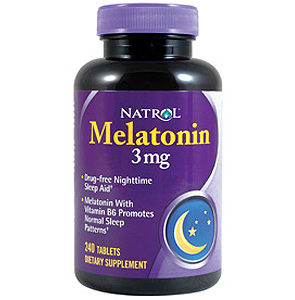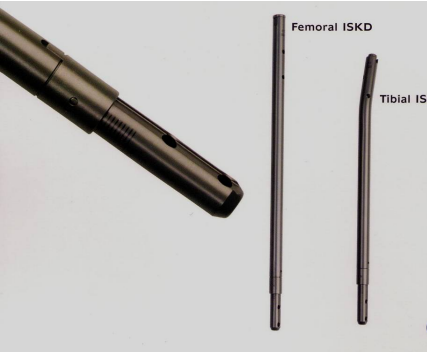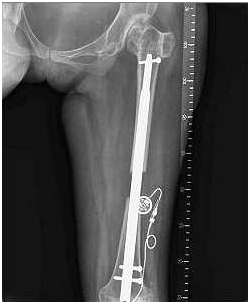 The compound Melatonin was always linked to Niacin as a supplement vitamin to take stated by Hakker and Cliff in their posts. There was believed to have been 4 main methods they created, but the other 3 methods beside the basic M.E.N.S. method was not found by me. A lot of people have asked about the H.U.S.S. method which was theoretically supposed to give a person up to 2.5 cm of extra height a month, which just sounds too incredible to believe.
The compound Melatonin was always linked to Niacin as a supplement vitamin to take stated by Hakker and Cliff in their posts. There was believed to have been 4 main methods they created, but the other 3 methods beside the basic M.E.N.S. method was not found by me. A lot of people have asked about the H.U.S.S. method which was theoretically supposed to give a person up to 2.5 cm of extra height a month, which just sounds too incredible to believe.
I found more information on the bodybuilding boards of a person who started to describe the use of niacin and melatonin in helping people increase their height using the vitamin supplements.
Again, I will highlight the parts that are the most important
From the BodyBuilding Forum HERE
ABSTRACT:
Melatonin and resistance exercise alone have been shown to increase the levels of growth hormone (GH). The purpose of this study was to determine the effects of ingestion of a single dose of melatonin and heavy resistance exercise on serum GH, somatostatin (SST), and other hormones of the GH/insulin-like growth factor 1 (IGF-1) axis.*
Physically active males (n = 30) and females (n = 30) were randomly assigned to ingest either a melatonin supplement at 0.5 mg or 5.0 mg, or 1.0 mg of dextrose placebo. After a baseline blood sample, participants ingested the supplement and underwent blood sampling every 15 min for 60 min, at which point they underwent a single bout of resistance exercise with the leg press for 7 sets of 7 reps at 85% 1-RM. After exercise, participants provided additional blood samples every 15 min for a total of 120 min.*
Serum free GH, SST, IGF-1, IGFBP-1, and IGFBP-3 were determined with ELISA. Data were evaluated as the peak pre- and post-exercise values subtracted from baseline and the delta values analyzed with separate three-way ANOVA (p < 0.05). In males, when compared to placebo, 5.0 mg melatonin caused GH to increase (p = 0.017) and SST to decrease prior to exercise (p = 0.031), whereas both 0.5 and 5.0 mg melatonin were greater than placebo after exercise (p = 0.045) and less than placebo for SST. No significant differences occurred for IGF-1; however, males were shown to have higher levels of IGFBP-1 independent of supplementation (p = 0.004). The 5.0 mg melatonin dose resulted in higher IGFBP-3 in males (p = 0.017).*
In conclusion, for males 5.0 mg melatonin appears to increase serum GH while concomitantly lowering SST levels; however, when combined with resistance exercise both melatonin doses positively impacts GH levels in a manner not entirely dependent on SST.
Melatonin
The pineal gland, via melatonin, may also modulate GH secretion. Oral administration of melatonin to normal subjects increases basal GH levels and the GH response to GHRH (516), but marginally affects GH responses to hypoglycemia or apomorphine (517, 518). This suggests that melatonin might play a minimal (stimulatory) role in baseline GH secretion, possibly acting at the hypothalamic level via inhibition of somatostatin. The GH response to L-dopa is reduced in blind human subjects (519), who presumptively lack both light-mediated inhibition of melatonin release and the normal slow wave sleep-associated rise in plasma GH concentrations (520). Thus, it is possible, but entirely unproven, that variations in the release of endogenous melatonin could modulate GH secretion in humans.
From Source 1
Melatonin: A Hormone That Protects Against Breast Cancer and Aging
Thursday, April 10, 2008 by: Barbara L. Minton
|
|
| (NaturalNews) Melatonin is nature’s sleeping pill. It is secreted by the light sensitive pineal gland which regulates our biological clock and synchronizes our hormonal-immune network. Our level of melatonin rises with darkness and falls with light. According to Dr. Uzzi Reiss, in his book Natural Hormone Balance, a healthy pineal gland produces 2.5 milligrams of melatonin every twenty-four hours. Melatonin plays a central role in the natural aging processes of the body. When pineal production begins to diminish, at around age 40, the decline sets off changes in the operation of the body’s cells. The physiology of the cell shifts from repair and rejuvenation to aging and degeneration.Recent studies are now showing that as our levels of melatonin sink, our chances for breast cancer rise. Many women with breast cancer have lower levels of melatonin than those without the disease. Laboratory experiments indicate that lower levels of melatonin stimulate growth of breast cancer cells. Adding melatonin to these cells inhibits their growth.Breast cancer and melatonin: studies and results
According to a study at the Department of Physiology, Faculty of Science, University of Extremadura, Badajoz, Spain, published in Molecular and Cellular Biochemistry, Oct. 2005, melatonin increases the survival time of animals with untreated mammary tumors. The aim of the study was to evaluate the therapeutic effect of melatonin on rats with advanced and untreated mammary tumors. Mammary tumors were chemically induced in rats. Following appearance of the tumors, the effect of melatonin was evaluated based on the survival time, tumor multiplicity, and tumor volume up until the death of the animals. Additionally, the variations in prolactin, noradrenaline and adrenaline concentrations, and percentage of NK cells were evaluated after one month of the melatonin treatment. Results indicate that daily administration of melatonin increased significantly the survival time of tumor bearing animals compared to the control non-melatonin receiving rats. However, the lengthened survival time did not correlate with changes in either tumor multiplicity or growth rates. Animals with mammary tumors exhibited increased levels of prolactin and catecholamine concentrations compared to the healthy animals. The administration of melatonin stabilized the hormone levels, returning them to the levels of the healthy animals. Rats with mammary tumors also presented lower percentages of NK cells, however these levels were not increased with the administration of melatonin. Researchers concluded that melatonin is beneficial during advanced breast cancer. It increases survival time, perhaps by improving the homeostatic and neuroendocrine equilibrium which is imbalanced during advanced breast cancer. As published in the International Journal of Cancer, January, 2006, researchers at the Department of Physiology and Pharmacology, School of Medicine, University of Cantabria, Santander, Spain, found that melatonin inhibits the growth of induced mammary tumors by decreasing the local biosynthesis of estrogens through the modulation of aromatase activity. They note that melatonin inhibits the growth ofbreast cancer cells by interacting with estrogen-responsive pathways, effectively behaving as an anti-estrogenic hormone. They had previously described that melatonin reduces aromatase expression and activity in human breast cancer cells, thus modulating local estrogen biosynthesis. To investigate the in vivo aromatase-inhibitory properties of melatonin in the current study, the indoleamine was administered to rats bearing induced mammary tumors ovariectomized and treated with testosterone. In these castrated animals, the growth of the estrogen-sensitive tumors depended on the local aromatization of testosterone to estrogens. Ovariectomy significantly reduced the size of the tumors while the administration of testosterone to ovariectomized animals stimulated tumor growth, an effect that was suppressed by administration of melatonin or the aromatase inhibitor aminoglutethimide. Uterine weight of the rats, which depended on the local synthesis of estrogens, was increased by testosterone, except in those animals that were also treated with melatonin or aminoglutethimide. The growth-stimulatory effects of testosterone on the uterus and tumors depended exclusively on locally formed estrogens, since no changes in serum estradiol were appreciated in testosterone treated rats. Tumors from animals treated with melatonin had lower microsomal aromatase activity than tumors of animals from other groups, and incubation with melatonin decreased the aromatase activity of microsomal fractions of tumors. Animals treated with melatonin had the same survival probability as the castrated animals and significantly higher survival probability than those not castrated. Researchers conclude that melatonin could exert its antitumoral effects on hormone dependent mammary tumors by inhibiting the aromatase activity of the tumoral tissue. And in the April, 2007 edition of Oncology Report, this same research team at the University of Cantabria, Santander, Spain, reports the effects of MT1 melatonin receptor over-expression on the aromatase-suppressive effect of melatonin in human breast cancer cells. They note that a major mechanism through which melatonin reduces the development of breast cancer is based on its anti-estrogenic actions by interfering at different levels with the estrogen-signaling pathways. Transfection of the MT1 melatonin receptor in the breast cancer cells significantly decreased aromatase activity, and MT1-transfected cells showed a level of aromatase activity that was 50% of vector-transfected cells. The proliferation of estrogen-sensitive cells in an estradiol-free media but in the presence of testosterone (an indirect measure of aromatase activity) was strongly inhibited by melatonin in those cells over-expressing the MT1 receptor. This inhibitory effect of melatonin on cell growth was higher on MT1 transfected cells than in vector transfected cells. In MT1-transfected cells, aromatase activity was inhibited by melatonin. The same concentrations of melatonin did not significantly influence the aromatase activity of the vector-transfected cells. MT1 melatonin receptor transfection induced a 55% inhibition of aromatase expression in comparison to vector-transfected cells. Additionally, in MT1-transfected cells, melatonin treatment inhibited aromatase expression and induced a higher down-regulation of aromatase expression than in vector-transfected cells. The researchers concluded that their findings point to the importance of the MT1 melatonin receptor in mediating the oncostatic action of melatonin in human breast cancer cells, and confirm the MT1 melatonin receptor as a major mediator in the melatonin signaling pathway in breast cancer. Supplementing with melatonin Since production of melatonin by the pineal gland begins to decline at age 40, it follows that anyone over the age of 40 may be melatonin deficient and may benefit from supplementation as a preventative. Since melatonin is produced while you sleep, it also follows that if you do not get enough sleep, your levels of melatonin may be deficient. Enough sleep is 8 or more hours. Supplementing with melatonin may also be indicated for those who now have or once had breast cancer. Your melatonin level can be measured with a simple blood test. According to Dr. Reiss, you should not take melatonin if you have exhausted adrenal glands, symptomized by constant fatigue, low blood pressure, feeling faint when standing up, and low tolerance for physical and emotional stress. Melatonin can reduce the production of cortisol and would be contraindicated for this condition. When adrenal glands are again healthy, supplementation can be started. Women who are trying to conceive should not take melatonin as it could negatively impact the ovulation process. Melatonin supplements are synthesized to be bio-identical with your own melatonin. They are available at health food stores in capsules, sublingual drops, pills, and as an oral spray. For anti-aging, Dr. Reiss recommends starting with 0.25 to 0.5 milligrams and increasing the dose gradually until you notice a side effect. The optimal dose is usually 1 to 5 milligrams. Side effects from excess melatonin are drowsiness upon waking, wild dreams that are not pleasant, waking up nervous, sweating, or with palpitations, and decreased estrogen and progesterone levels. There is disagreement among authorities as to whether higher doses of melatonin should be recommended for cancer prevention. Dr. Reiss recommends 20 to 40 milligrams daily for prevention. He notes that participants in studies using these very high doses did not develop the side effects seen at lower doses. Dr. John Lee, in his book What Your Doctor May Not Tell You About Breast Cancer, says that high melatonin levels reduce the ovarian production of estrogens and progesterone, and this is the feedback that is thought to be protective against breast cancer. However, he stresses that all the body’s hormones must be in balance, and more is not better when it comes to melatonin. He recommends supplementing with no more than 1 milligram of melatonin sublingually just before bedtime. If you choose to rely on you own production of melatonin, be aware that production of melatonin rises from bedtime until the middle of the night, and then slowly declines throughout the rest of the night. This production is dependent on you sleeping in a dark room. If you get up during the night and turn on the light or open the refrigerator door, your melatonin production will abruptly stop. About the authorBarbara is a school psychologist, a published author in the area of personal finance, a breast cancer survivor using “alternative” treatments, a born existentialist, and a student of nature and all things natural. |
Conclusion: In my personal opinion, this is another breakthrough in height increase research. The melatonin seems to promote GH release somehow, be an estrogen aromatization inhibitor, and seems to regulate our sleep patterns which means we can get better, longer, and deeper sleep effectively helping our brain to release even more Gh and our spines to decompress.
In addition, melatonin is supposed to give us some anti-aging properties. We are talking about another one of those medical miracle supplements which has so many positive benefits. As for whether it can help the adult with fused growth plates grow taller, I would be willing to bet that it might have the ability to do that, even if it is from getting better and more sleep and spinal decompression.
{Here’s a new Melatonin study-Tyler
Melatonin regulates mesenchymal stem cell differentiation: a review
“Melatonin seems to regulate selected signaling responses that alternatively commit and drive MSC through differentiation into osteogenic, chondrogenic, adipogenic or myogenic lineages. Common pathways appear to function as master regulators of these processes acting at the earliest or irreversible steps of MSC signaling, such as the Wnt/β-catenin/PPARγ pathway, MAPKs, TGF-β signaling and others.”
“antioxidant effects of melatonin are just a component of the homeostatic and cell protective effects”
“melatonin can shift bone marrow precursor cells from an adipocytic to osteoblastic differentiation”<-We would want it to shift to chondrogenic differentiation.
“MSC express antigens detected on pericytes, endothelial and perivascular cells and that postcapillary venule pericytes from bone-marrow and peri-vascular cells from most tissues exhibit MSC-like characteristics”
“TWIST also plays an important role in lineage specification of MSC”<-Twist1 overexpression results in bone overgrowth.
“adult MSC [are in the] bone marrow. [But only account for] 0.001- 0.01% of total nucleated cells”<-Since mesenchymal condensation is key to form neo-growth plates this is an obstacle.
“The canonical Wnt/β-catenin signaling is a key regulator of bone formation and MSC differentiation to either the osteogenic or chondrogenic lineage through rather high or low Wnt
canonical activity, respectively”
“an appropriate level of β-catenin signaling is required for commitment to the chondrogenic lineage.”<-You need just enough B-Catenin signaling to induce chondrogenesis.
“activated Wnt/β-catenin pathway can induce MSC aging possibly by the activation of ROS generating pathways or lower control of their reactivity by antioxidant genes. Actually, ROS generation was increased in MSC when high levels of Wnt3a were expressed, whereas lower levels of this Wnt form were unable to induce ROS generation.”<-Thus maybe too elevated levels of Beta-Catenin inhibit neo growth plate formation in adults?
“melatonin is known to regulate ERK1/2 activity”
“Cells were induced during chondrogenic differentiation via high density micromass culture
in chondrogenic medium containing vehicle or 50 nM melatonin.”<-The melatonin group was more chondrogenic than the other group but other precursors were needed to induce chondrogenesis than the melatonin. The cells used were human MSCs which is promising for height growth as they are the cells in the bone marrow unlike embryonic stem cells.
“Besides the collagen type II (COL2A1) and X (COL10A1), the genes involved in chondrogenic
differentiation up-regulated by the melatonin treatment included aggrecan (ACAN), SRY (Sex
determining Region Y), Sox 9 (SOX9), runt-related transcription factor 2 (RUNX2), and the potent
inducer of chondrogenic differentiation BMP2.”<-The study this points to was Forced expression of Sox2 or Nanog in human bone marrow derived mesenchymal stem cells maintains their expansion and differentiation capabilities. However, I could not find the related melatonin information.



